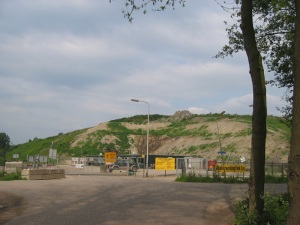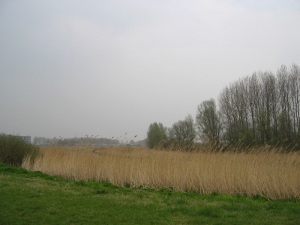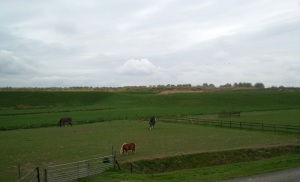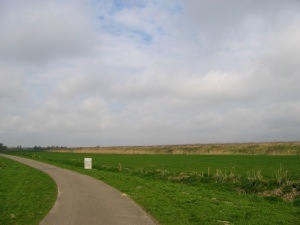
stinky's heap
A little while ago I wrote about where the garbage I’m currently producing doesn’t go: the garbage dump near Barneveld, in the Netherlands. So I thought I’d go myself.
I can report it’s a beaut and large. And stinky. An oily substance seeps out of the frontal garbage declivity. Things peek up above the dirt which should be under it.
Other things lie about in the nonchalant abandon of retirement. What could they be doing, those giant rolls of something plastic. Still considering a second career? A short distance away lolls a stack of sewer pipe, also used, piled nearly up to the tops of the trees. If you can bring yourself to walk up close, you can look into the eyes of the curious horses in the meadow on the other side, like peering through a toilet roll at a primitive picture of rural delights.

astro turf? roofing material?
The whole disreputable pile is exploited, as they say in the Netherlands, by a certain Vink, who’s just lost his permit for irregularities in disposal practices. Apparently I’m not the only one who took exception. But irregularities also occurred in the investigation, and Stinky may appeal the ruling. It doesn’t seem as if he’s in a hurry to clean up his act.
All of it lies alongside a picturesque country lane with old trees only a little the worse for wear that winds its way through fields just plowed and sowed. If you turn your gaze just so, you can enjoy the view, the peaceful evening air, the birdsong, and the rustic chorus of crickets. Just bring some nose clips.


